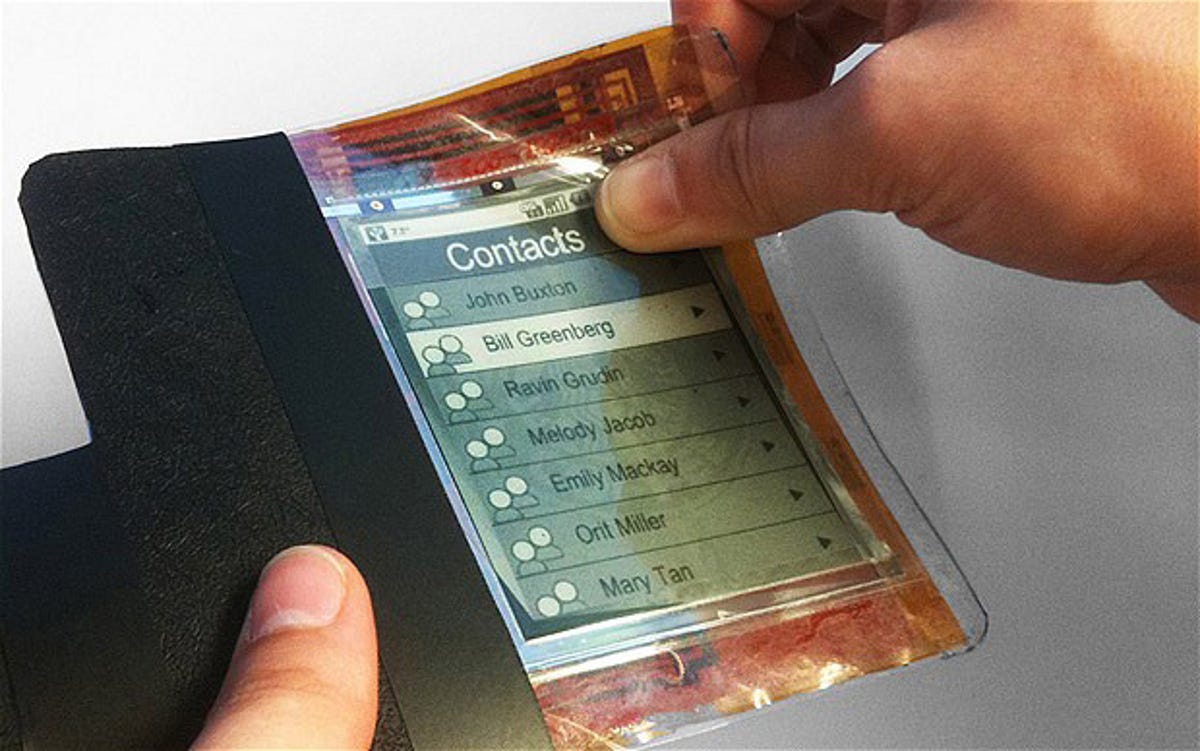
You can write on it, bend it or use it as a touchscreen. An electronic paper smart phone created by researchers in Canada could be a glimpse into the future of mobile tech.
Ultra-slim and physically flexible, the PaperPhone is the result of a collaboration between Queen’s University in Kingston, Ontario, Arizona State University in the US and researchers from the E-Ink Corporation.
“This is the future. Everything is going to look and feel like this within five years,” reckons Dr Roel Vertegaal, director of the Human Media Lab at Queen’s. “This computer looks, feels and operates like a small sheet of interactive paper.”
What makes it work? A 3.7-inch flexible E-Ink display, similar to that found in Amazon’s Kindle, the main difference being the PaperPhone’s display is flexible. Thin-film sensors allow the phone to respond to bending of the screen to make calls, read ebooks, play music and navigate apps. But don’t get too excited — it won’t hit the market for another five years.
The impressive £4,500 prototype claims to be the world’s first electronic paper-based phone, but the idea isn’t exactly new. Created to investigate how people would use a flexible device, the early version of the PaperPhone is connected to a laptop to record and interpret the ways test subjects flex it.
“The paperless office is here. Everything can be stored digitally and you can place these computers on top of each other just like a stack of paper, or throw them around the desk,” says the optimistic Dr Vertegaal.
The team expects all phones will be like this within 10 years, making the touchpad obsolete. We’re not sure how practical it is to squeeze your phone to take calls or to flex to text, but it does look insanely futuristic.
The PaperPhone prototype will be on display on 10 May at the Conference on Human Factors in Computing Systems in Vancouver. The research team also plans to show off a flexible E-Ink wristband computer they call the Snaplet.
Are we all going to be flexing our texts in a few years? Is the PaperPhone the future of mobile technology? Have a look at the video and let us know what you think in the comments.



